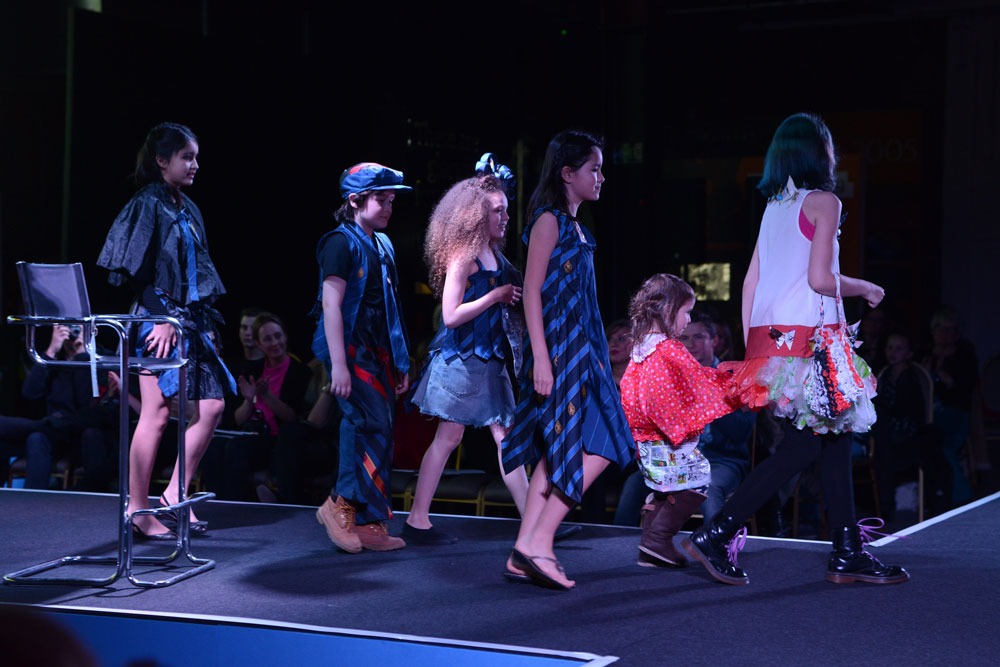
February 27, 2020; Vogue Business
The phrase “you are what you eat” entered long ago into everyday parlance, and the fashion industry often implies that you are what you wear. But when thinking about what you wear, you might want to consider the impact of your fashion choices on carbon emissions.
A report broadcast last December by Boston public radio station WBUR noted that, “The global fashion industry emits 1.7 billion tons of carbon dioxide per year.” That’s nearly twice as much as the 918 million tons emitted by the global aviation industry. Put differently, given that global carbon emissions in 2019 were 43.1 billion tons, fashion’s contribution to the total is close to four percent.
A little over a year ago, Christine Ekenga, assistant professor at Washington University in St. Louis, published a study in Environmental Health with two of her graduate students, Rachel Bick and Erika Halsey. In that study, Ekenga and her coauthors point out that, “From the growth of water-intensive cotton, to the release of untreated dyes into local water sources, to worker’s low wages and poor working conditions, the environmental and social costs involved in textile manufacturing are widespread.”
The research team adds that, “Globally, 80 billion pieces of new clothing are purchased each year, translating to $1.2 trillion annually for the global fashion industry.…Approximately 85 percent of the clothing Americans consume, nearly 3.8 billion pounds annually, is sent to landfills as solid waste, amounting to nearly 80 pounds per American per year.” As a show on “fast fashion” last fall by comedian Hasan Minhaj noted, 342 million barrels of oil are used annually in the production of synthetic fibers alone.
Can this be changed? Writing in Vogue Business, Rachel Cernansky looks at some of the efforts to do so. Cernansky contends that fashion might borrow some of the tools developed by sustainable agriculture. Fashion, like food, as Cernansky notes, “is a global industry that touches virtually every person on the planet; it sources many raw materials from farms and forests; both industries create tremendous amounts of waste; and the casual purchases that consumers make on a routine basis affect whether and how brands prioritize sustainable values—or not.”
Sign up for our free newsletters
Subscribe to NPQ's newsletters to have our top stories delivered directly to your inbox.
By signing up, you agree to our privacy policy and terms of use, and to receive messages from NPQ and our partners.
Elizabeth Whitlow, who directs the nonprofit Regenerative Organic Alliance, says fashion companies that wish to operate more sustainably can do so using a number of tools, including charging a price premium, engaging in long-term buying commitments with suppliers, or extending zero-interest loans or other types of services to suppliers.
Deborah Drew, associate at the World Resources Institute’s Business Center, sees parallels between reducing fashion consumption and efforts to reduce beef consumption. For instance, consumers may be encouraged to reduce meat consumption rather than give up meat entirely. Similarly, simply buying clothes less often can have a major impact. Back in the 1980s, the average American bought 12 items of clothing a year; now that number is estimated to be between 64 and 68 items, with half of those items only worn three times or less.
While Cernansky encourages the fashion industry to look to the sustainable agriculture movement, she acknowledges that “both food and fashion industries both have long ways to go before either can claim sustainability.” A 2017 report from the Sustainable Agriculture & Food Systems Funders network, she observes, argued that the food movement waited too long to bring in voices of people experiencing the most direct negative impacts from the industry. The report, titled Common Threads and authored by Sarah Kelley of the Island Foundation, notes that, “Foundations can play a valuable role by working with nonprofits operating in the sustainable textiles sector to find ways to bring the voices of those most affected by pollution, toxics, and labor issues in the textile industry to the table in the early stages of program design and movement-building.”
Kelley adds, “US foundations are well-positioned to draw on key lessons from the sustainable food movement and accelerate the development of a coordinated movement that harnesses consumer demand for clean, ethical, and sustainably produced textiles.”—Steve Dubb













